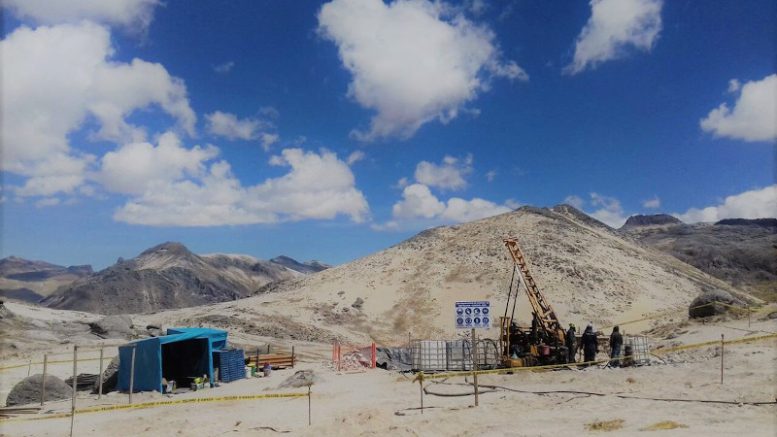A preliminary economic assessment (PEA) for American Lithium’s (TSXV: LI) Falchani project in Peru has tripled its net present value (NPV) to US$5.1 billion over the 2019 estimate of US$1.5 billion, the company said Wednesday.
The new assessment sets a lithium carbonate equivalent (LCE) price of US$22,500 per tonne, a large increase from over the $12,000 per tonne LCE in the 2019 PEA. The after-tax internal rate of return is 32%.
“The low operating cost potential at Falchani, with costs of less than US$5,100 per tonne lithium carbonate equivalent (LCE), puts it among the lowest cost next-tier lithium projects under development globally,” said CEO Simon Clarke in a statement.
The company reported a 476% increase in the measured and indicated LCE resource base in late October to 5.5 million tonnes LCE held in 447 million tonnes of material grading 2,327 parts per million (ppm) lithium. It includes 3.9 million inferred tonnes of LCE at 1,481 ppm lithium.
At an initial cost of US$681 million, the Falchani project plan spans a 43-year operational life, which includes 32 years of active mining and 11 years of processing stockpiled resources. Over its lifetime, the project will produce 2.64 million tonnes of high-purity LCE.
The production is planned in phases, with an initial LCE output of 23,145 tonnes per year, increasing to 45,084 tonnes per year in the second phase and reaching 72,624 tonnes per year in the third phase.
In an alternative scenario, the project also includes the production of sulphate of potash (SOP) and cesium sulphate as by-products from the sixth year onward. This addition increases the after-tax NPV to US$5.58 billion, factoring in the production of these additional compounds.
The operating costs are estimated at US$5,705 per tonne of LCE, including by-product credits.
“We are also extremely pleased to now include the compelling strategic and economic value proposition of adding SOP fertilizer and cesium sulphate by-products to the robust economic potential of core, high-purity lithium production at Falchani. This PEA update is a major step towards completion of pre-feasibility work,” Clarke said.
Juniors like American Lithium have been racing to build the world’s next lithium mines in Peru and elsewhere as the first building block of a supply chain that underpins the energy transition. According to analyst reports, the market share of electric vehicles has seen a dramatic rise, from 1% in 2017 to an expected 32% by 2027. This surge is reflected in lithium demand, which has grown about 5.5 times since 2017 and is expected to increase about 7.7 times by 2030 and about 13 times by 2050 under certain scenarios.
Still, the plummeting price of lithium over the past year has put some mines, such as Core Lithium‘s (ASX: CXO) Finniss operations in Australia, under pressure. LCE prices remain under 97,500 yuan per tonne (US$14,000), according to Trade Economics, maintaining the more than 80% decrease from 2023 and staying at a three-year low. This stability in prices reflects a market balance, characterized by abundant supply and subdued demand.
The Falchani project, located in Puno in the country’s southwest is set to use sulphuric acid leaching and other industry-standard techniques to produce battery-grade high-purity lithium carbonate. The SOP could fulfill domestic needs in Peru and offer export possibilities, while cesium sulphate could be refined for high-tech applications.
In mid-November, Peru’s top court confirmed American Lithium’s subsidiary as the rightful owner of key concessions, paving the way for the country’s first lithium mine in 2027.
American Lithium shares closed 3.3% higher Wednesday at $1.56 after touching $1.39 and $4.90 over the past 12 months. It has a market capitalization of $334.9 million.


Be the first to comment on "American Lithium PEA triples Falchani project value to US$5B"